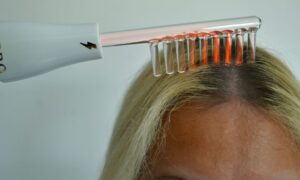Losing one’s hair, whether through aging or as a result of illness, can be a bit of a shock to the system. Depending on the permanency of the loss, you may look at wearing wigs as a temporary measure but ultimately conclude that hair restoration is worth trying. Hair restoration can be done in many ways, including surgery or pills.
What are hair restorations, and how do they work?
Hair restoration is typically a surgical procedure involving grafting hair from one part of the body and placing it on one’s head to address balding issues. Balding issues can arise from cancer treatments or skin diseases such as alopecia. It began in the 1950s when dermatologist Norman Orentriech began experimenting with donor hair by taking skin strips from one part of the scalp and transplanting them to another.
Another, less invasive procedure known as Follicular Unit Extraction (FUE) was created in the 1920s and 1930s in Japan by Dr. Shojui Okuda, who used a ‘punching’ method, essentially lifting by follicles to the millimeter, rather than taking an entire layer of skin. This method remained unknown for at least 60 years when it was revitalized in the West in the 1980s and 1990s.
Follicular Unit Extraction is often considered superior to other methods as it doesn’t have linear scarring like the skin graft procedure. However, procedures take longer and are more expensive than linear skin grafts, although the healing times for FUE are typically less than a week.
How has new technology revolutionized hair restoration?
Technology for hair restoration has come a long way since its early days. In the 1980s, a stereo microscope was introduced by B.L. Limmer that dissected linear transplants into micrografts consisting (ideally) of 50 grafts per square centimeter. This is the “gold standard” of FUE technology.
Another revolutionary technology that has reduced human-error potential by introducing robotic arms and cameras to assist dermatological surgeons with hair restoration. The first robotic transplant occurred in 2009, and the FDA approved robotic assistance for procedures on black and brown-haired men in 2011.
Another new technology breaking ground on the hair restoration front is using stem cells to encourage hair regeneration. This technique is called “hair cloning,” It is still very much in the early stages of development. Scientists recently discovered that stem cells are present in bald heads’ follicles; despite no “hair,” the cells that encourage follicular growth are still present.
This led to scientists replicating these stem cells in cultures before injecting the stem cell clusters into the patient’s scalp, where they produce healthy hair. In 2015, initial human hair trials were successful, although scientists discovered the hair grew in various directions and looked unnatural.
Four years later, thanks to the advent of the 3D printer, they could 3D nearly microscopic shafts to assist the hair in growing straight upwards. Although on the cutting edge of the science surrounding hair regeneration technology, this technique isn’t available for public use yet and is still in the research phase.
Pills as a treatment for hair loss
Many men and women, including those experiencing hair loss specifically related to gender, turn to pills to treat hair loss or lessen the symptoms of alopecia. Finasteride, or Propecia, is a pill sometimes prescribed to patients with alopecia. It’s a hormone blocker that inhibits the production of bodily hormones that encourage hair loss.
While the effectiveness of Propecia in treating male-pattern baldness has been well-documented, its effects on women’s hair loss need to be clarified, and it is not recommended for use in women of childbearing age. Women who experience hair loss may benefit from other treatments, such as topical minoxidil, low-level laser therapy, or hair transplants, depending on the cause of their hair loss.
Other treatments also use pills, although, amongst men, Finasteride has proven to be the most successful and most popular, with success in over 90% of cases, with two-thirds of these men also regenerating lost hair.
The FDA disapproves Finasteride for women, except in small doses of 1.25 and 2.5 milligrams per day. Some side effects of Finasteride for women include dizziness, increased body hair, breast swelling and tenderness, and headaches. 4 in 40 postmenopausal that took 5mg of Finasteride daily also reported decreased libido.
Advancements in hair restoration technology
Hair restoration technology and treatment have changed the lives of many alopecia sufferers, post-chemotherapy patients, and genetically predisposed bald men. The technology has come a long way since the initial skin grafting of the 1950s and even further in the last ten to fifteen, with surgery becoming optional rather than the typical treatment plan.
Couple this with stem cell therapy as a minimally invasive option showing promising results, and the future looks like a full head of hair for those who would otherwise be left cold in the winter.



































